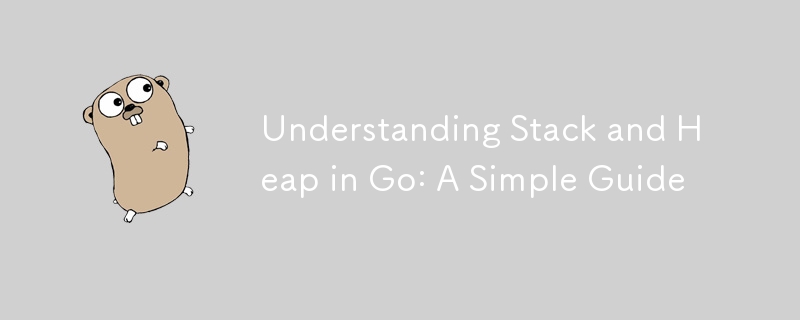

When you start learning Go, or any programming language for that matter, you will often hear about stack and heap memory. These two areas of memory are super important for understanding how your program runs and manages data behind the scenes. But don’t worry—today, we’ll explain them in an easy-to-understand way with a fun twist.
Imagine the stack as a neat pile of trays in a cafeteria. Every time someone needs a tray, they grab one from the top. And when they return a tray, they put it back on top of the pile. The stack in Go works similarly!
So, the stack follows a LIFO (Last In, First Out) system, just like how you’d take and return trays.
Example: Stack in Action
Let’s say we have this simple Go code:
func main() {
greet("John")
}
func greet(name string) {
message := "Hello, " + name
fmt.Println(message)
}
Here’s what happens step-by-step:
Neat and organized, right? The stack is perfect for handling things that are temporary and go away quickly—like local variables inside functions.
Now, let’s imagine the heap as a large playground. Unlike the stack, where you can only add or remove things from the top, the heap is more like a big open area where you can put things anywhere.
While the heap is big and can store more data, it’s slower to access than the stack because Go has to figure out where things are and clean up after itself. Go has a garbage collector that automatically tidies up unused heap memory, just like someone sweeping up the playground.
Example: Heap in Action
Take a look at this Go code:
func main() {
user := newUser("Alice")
fmt.Println(user.name)
}
func newUser(name string) *User {
user := &User{name: name}
return user
}
type User struct {
name string
}
Here’s how the heap comes into play:
The heap is useful when you need to store data that outlives the function it was created in, but it’s a little slower and needs careful management by Go’s garbage collector.
Stack is like a tray stack: small, fast, and temporary. Perfect for local variables inside functions.
Heap is like a playground: big, more flexible, but slower. Used for things that need to live longer (like objects that need to be shared across functions).
Understanding the difference between the stack and heap is key to writing efficient Go programs. The stack is fast and easy to manage, great for temporary data. The heap is bigger but slower, used when you need something to stick around.
Go handles much of the complexity for you with automatic memory management, but knowing these concepts will help you write more optimized and efficient code.
Happy coding!
The above is the detailed content of Understanding Stack and Heap in Go: A Simple Guide. For more information, please follow other related articles on the PHP Chinese website!




